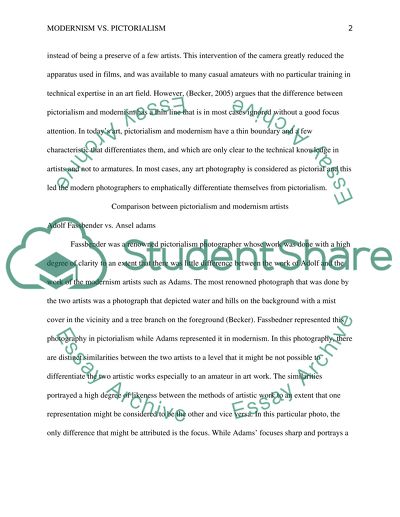Cite this document
(“Pictorialism and Modernism Essay Example | Topics and Well Written Essays - 2250 words”, n.d.)
Pictorialism and Modernism Essay Example | Topics and Well Written Essays - 2250 words. Retrieved from https://studentshare.org/visual-arts-film-studies/1582482-pictorialism-and-modernism
Pictorialism and Modernism Essay Example | Topics and Well Written Essays - 2250 words. Retrieved from https://studentshare.org/visual-arts-film-studies/1582482-pictorialism-and-modernism
(Pictorialism and Modernism Essay Example | Topics and Well Written Essays - 2250 Words)
Pictorialism and Modernism Essay Example | Topics and Well Written Essays - 2250 Words. https://studentshare.org/visual-arts-film-studies/1582482-pictorialism-and-modernism.
Pictorialism and Modernism Essay Example | Topics and Well Written Essays - 2250 Words. https://studentshare.org/visual-arts-film-studies/1582482-pictorialism-and-modernism.
“Pictorialism and Modernism Essay Example | Topics and Well Written Essays - 2250 Words”, n.d. https://studentshare.org/visual-arts-film-studies/1582482-pictorialism-and-modernism.


